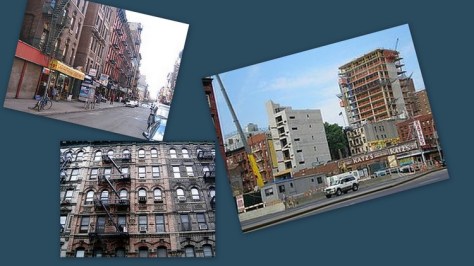Although fashion design is not my element, it is one of my wife’s great passions. Yet a recent visit to the Museum at FIT – the Fashion Institute of Technology – in New York City’s historic Chelsea neighborhood unexpectedly connected with my interest in history.

The Fashion Institute of Technology is America’s premiere college for the business and art of fashion design. Its museum’s current exhibit, Uniformity, is an entertaining exploration that will change the way you perceive the entire notion of uniforms. The 200 year retrospective from military to sports uniforms goes beyond the obvious, detailing their influence on everyday fashion from beach to formal wear.
In John Galliano’s camouflage evening gown for Dior in 2001 (above, left) the influence is obvious. Yet I never gave it much thought that this trend is at least two centuries old. What was more surprising to me is that uniforms, clothing meant to make the wearer impersonal, for so long influenced fashion designed to be individualistic.


As early as the 1840s, a portrait of Queen Victoria’s four year old son, Prince Edward Albert, in a naval uniform made a fashion statement for affluent children’s clothing. By the 1890s, summer fashion for women (above left) had a decided naval bent and the trend has never lost favor (above right)
Designer Chitose Abe in her 2015 collection for her Sacai label combines British and French naval elements in her cotton and silk ensemble.
Yet by the 1940s military uniforms themselves combined functionality and fashion.


The World War II uniform designed for the Navy’s new W.A.V.E.S. division was hailed as a fashion success – functional yet feminine. It was also the first military uniform designed by a major American couturier, the House of Mainbocher founded by Main Rousseau Bocher in 1929. But the Army’s new W.A.C. division uniform was the work of a committee. It was not only dubbed “olive drab,” but blamed for poor W.A.C. recruitment numbers compared to the Navy’s W.A.V.E.S. Even in war fashion made a statement!

Perhaps no genre of uniforms has had a greater fashion influence than sports. From the baseball cap to brand logos, America’s national sport has convinced well dressed people that being a walking advertisement for your favorite team and brands is desirable to one’s identity.

Of course football followed suit. According to FIT, Geoffrey Beene “shocked the fashion elite” in 1967 with his sequined even gown that’s simply an elongated 1930s football jersey.
FIT’s fine Uniformity exhibit doesn’t ignore the influence on fashion of maid, butler, waiter and waitress clothing. In 2015 Karl Lagerfeld designed this evening dress for the House of Chanel using the typical uniform of waiters in Parisian brasseries.

The museum of the Fashion Institute of Technology, part of the State University of New York, is open Tuesday through Saturday. Admission is free. What was even more surprising was the knowledge and enthusiasm of the staff, especially the guards. They were eager to engage in conversation and added to the pleasure of the exhibit.
You can read all my articles and subscribe to my Examiner columns at:
Hellenic News of America
Original World Insights
Culinary Travel Examiner
International Dining Examiner
International Travel Examiner
Philadelphia Fine Dining Examiner
Food & Recipes Examiner













































You must be logged in to post a comment.